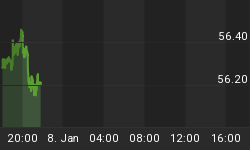Amazon said its board of directors has approved a 20-to-1 ratio stock split in what amounts to the fourth stock split for the online retail giant since it went public in 1997, and its first since 1999.
Currently, one share of Amazon stock costs about $3,000 and if the company’s shareholders approve the split, it will drop to about $150 a share. The company also said the board of directors authorized it to buy back up to $10 billion worth of shares.
Analysts following Amazon stock see the announcement as a bullish signal about how the company feels about its own outlook.
Morgan Stanley analyst Brian Nowak wrote in a note that Amazon historically has timed previous buybacks well.
“Historically, Amazon’s repurchases have been positive signals about the equity value,” Nowak wrote. “As big tech (GOOGL/FB/AAPL/MSFT) becomes more shareholder friendly (buybacks, disclosure, etc) we are happy to see AMZN participate.”
Wells Fargo analyst Brian Fitzgerald suggested that stock split could pave the way for entrance into the Dow Jones Industrial Average.
"We expect that the stock split should increase the accessibility of shares to a broader array of potential investors, and note that the split should allow for potential inclusion of Amazon shares in the Dow Jones Industrial Average," Fitzgerald wrote in the note.
Amazon shares were up over 5% Thursday, following the late Wednesday announcement.
However, YTD, the online retail giant’s shares have shed nearly 14%, and over the past 12 months, they are down nearly 6%, compared to Apple’s 30% gains and Alphabet’s 26% gains during that same time period.
Google parent Alphabet, also announced a 20-for-1 split last month.
A stock split represents a company's management decision to issue additional shares by issuing additional shares to existing shareholders. The most common split ratios are 2-for-1 and 3-for-1, which means that shareholders get two or three shares, respectively, for every share held.
In the stock split process, the share price decreases in the same proportion that the number of shares outstanding increases, but leaving the market cap unchanged.
In 2020, within weeks of each other, Tesla and Apple announced stock splits. In July, Apple announced a 4-for-1 stock split while Tesla, two weeks later, went 5-for-1.
In the weeks between the announcement and the execution of the split, Tesla’s shares gained over 70%, while Apple added $560 billion in value.
Unlike a few decades ago, stock splits have become increasingly rare, partly because corporations now prefer to manage the value, not price, of their shares.
Stock splits were preferred for companies to achieve a target price range for their shares. In the mid-1980s, stock splits happened all the time. Between 2017 and 2021, S&P 500 companies executed 26 stock splits, compared with 12 just in 2011.
Due to the increase in popularity of stock trading in the last few years, and high stock prices of major tech companies, some brokerages found other solutions to attract new investors by introducing fractional shares.
Having the option to buy fractional shares allows investors to buy a portion of a share, which makes it possible to own high-priced stocks. Numerous brokers including Robinhood, Charles Schwab and Fidelity allow investors to buy fractions of shares, though the main exchanges still do not.

















